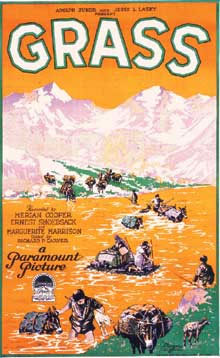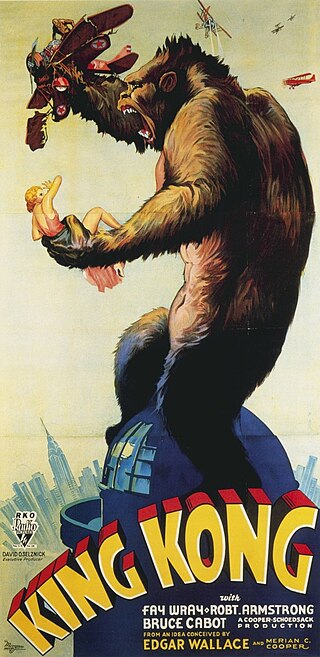
King Kong is a 1933 American pre-Code adventure romance monster film directed and produced by Merian C. Cooper and Ernest B. Schoedsack, with special effects by Willis H. O'Brien and music by Max Steiner. Produced and distributed by RKO Radio Pictures, it is the first film in the King Kong franchise. The film stars Fay Wray, Robert Armstrong, and Bruce Cabot. The film follows a giant ape dubbed Kong who is offered a beautiful young woman as a sacrifice.

Nanook of the North is a 1922 American silent film that combines elements of documentary and docudrama/docufiction, at a time when the concept of separating films into documentary and drama did not yet exist. In the tradition of what would later be called salvage ethnography, the film follows the struggles of the Inuk man named Nanook and his family in the Canadian Arctic. It is written and directed by Robert J. Flaherty, who also served as cinematographer, editor, and producer.

Chang: A Drama of the Wilderness, also known simply as Chang is a 1927 American silent documentary film about a poor farmer in northern Nan Province and his daily struggle for survival in the jungle. The film was directed by Merian C. Cooper and Ernest B. Schoedsack. It was released by Famous Players–Lasky, a division of Paramount Pictures.
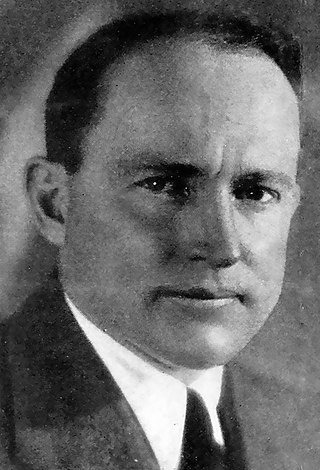
Merian Caldwell Cooper was an American filmmaker, actor, and producer, as well as a former aviator who served as an officer in the United States Army Air Service and Polish Air Force. In film, his most famous work was the 1933 movie King Kong, and he is credited as co-inventor of the Cinerama film projection process. He was awarded an honorary Oscar for lifetime achievement in 1952 and received a star on the Hollywood Walk of Fame in 1960. Before entering the movie business, Cooper had a distinguished career as the founder of the Kościuszko Squadron during the Polish–Soviet War and was a Soviet prisoner of war for a time. He got his start in film as part of the Explorers Club, traveling the world and documenting adventures. He was a member of the board of directors of Pan American Airways, but his love of film took priority. During his film career, he worked for companies such as Pioneer Pictures, RKO Pictures, and Metro-Goldwyn-Mayer. In 1925, he and Ernest B. Schoedsack went to Iran and made Grass: A Nation's Battle for Life, a documentary about the Bakhtiari people.

The Bakhtiari are a Lur tribe from Iran. They speak the Bakhtiari dialect of the Luri language.

Kevin Brownlow is a British film historian, television documentary-maker, filmmaker, author, and film editor. He is best known for his work documenting the history of the silent era, having become interested in silent film at the age of eleven. This interest grew into a career spent documenting and restoring film. Brownlow has rescued many silent films and their history. His initiative in interviewing many largely forgotten, elderly film pioneers in the 1960s and 1970s preserved a legacy of early mass-entertainment cinema. He received an Academy Honorary Award at the 2nd Annual Governors Awards given by the Academy of Motion Picture Arts and Sciences on 13 November 2010. This was the first occasion on which an Academy Honorary Award was given to a film preservationist.

Dr. Cyclops is a 1940 American science fiction horror film from Paramount Pictures, produced by Dale Van Every and Merian C. Cooper, directed by Ernest B. Schoedsack, and starring Thomas Coley, Victor Kilian, Janice Logan, Charles Halton, Frank Yaconelli and Albert Dekker.

Robert William Armstrong was an American film and television actor noted for playing Carl Denham in the 1933 version of King Kong by RKO Pictures. He delivered the film's famous final line: "It wasn't the airplanes. It was beauty killed the beast."

Ernest Beaumont Schoedsack was an American motion picture cinematographer, producer, and director. Schoedsack worked as a cameraman in World War I, where he served in the U.S. Army Signal Corps. At the conclusion of the war, he stayed in Europe to further his career. He worked on several films with Merian C. Cooper including King Kong, Chang: A Drama of the Wilderness, and The Most Dangerous Game. He also collaborated with screenwriter and actress Ruth Rose, whom he later married. Schoedsack died on December 23, 1979, at age 86.

Marguerite Elton Harrison Blake (1879–1967) was an American socialite who became a reporter and author, spy, filmmaker and translator. Although now known for her undercover work as well as her extensive writings, she considered her main contributions as founding the Children's Hospital School near Baltimore as a young wife, and decades later helping to found the Society of Woman Geographers.

The Most Dangerous Game is a 1932 American pre-Code horror film, directed by Ernest B. Schoedsack and Irving Pichel, starring Joel McCrea, Fay Wray and Leslie Banks. The movie is an adaptation of the 1924 short story of the same name by Richard Connell; it is the first film version of the story. In the United Kingdom, the film was released as The Hounds of Zaroff. In the film, Bob Rainsford is stranded on a remote island after a yacht crash. He discovers a luxurious house owned by a big game hunter, Zaroff, who is hosting two other shipwreck survivors, siblings Eve and Martin Trowbridge. Zaroff hints that he has rediscovered the thrill of hunting after pursuing "the most dangerous game." That evening, Eve and Rainsford find a trophy room with human heads mounted on the wall and they realize that Zaroff has been hunting humans. Rainsford refuses to accompany Zaroff hunting, and Zaroff says that Rainsford must become the next prey. Zaroff gives Rainsford a hunting knife and a day to explore the island before he starts to hunt him at midnight. Rainsford devises two traps to use against Zaroff, but both fail. Finally, Zaroff brings out his dogs, shooting at Rainsford as a dog attacks him. Rainsford falls over a cliff with the dog, but later returns and wounds Zaroff and escapes with Eve.

The Last Outpost is a 1935 American adventure film directed by Charles Barton and Louis J. Gasnier and written by Charles Brackett, Frank Partos and Philip MacDonald. It is based on F. Britten Austin's novel The Drum. The film stars Cary Grant, Claude Rains, Gertrude Michael, Kathleen Burke, Colin Tapley, Margaret Swope and Billy Bevan. The film was released on October 11, 1935, by Paramount Pictures.
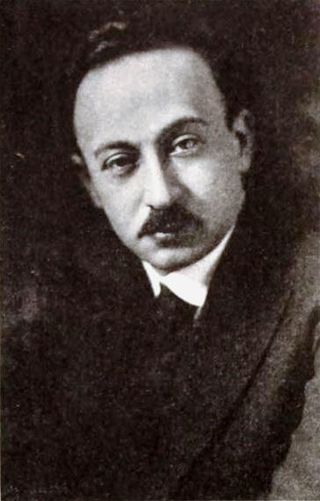
Hugo Riesenfeld was an Austrian-American composer. As a film director, he began to write his own orchestral compositions for silent films in 1917, and co-created modern production techniques where film scoring serves an integral part of the action. Riesenfeld composed about 100 film scores in his career.
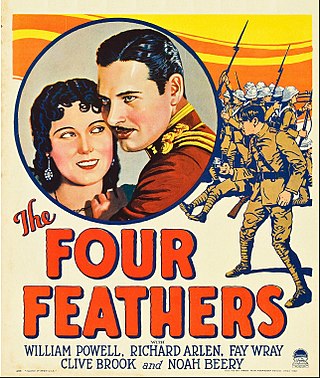
The Four Feathers is a 1929 American sound war film directed by Merian C. Cooper and starring William Powell, Richard Arlen, Clive Brook and Fay Wray. This was the third of numerous film versions of the 1902 novel The Four Feathers written by A. E. W. Mason. While the film has no audible dialog, it was released with a synchronized musical score with sound effects using both the sound-on-disc and sound-on-film process. The 1929 version of The Four Feathers premiered at the Criterion Theatre in New York City on June 12, 1929.

Ruth Rose was a writer who worked on several films in the 1930s and the 1940s, most famously the original 1933 classic King Kong.

Bahman Maghsoudlou is a film scholar, critic, author and independent film producer/director. Maghsoudlou has, in the words of Cinema Without Borders editor-in-chief Bijan Tehrani, "dedicated his life [to] recording valuable information about Iran’s contemporary art and culture."

Heroes All is a 1920 American World War I documentary film that was released by the American Red Cross.

Wild Cargo was Frank Buck's second book, a bestseller. Buck, was born on March 17, 1884, in a wagon yard owned by his father at Gainesville, When he was five, his family moved to Dallas. After attending public schools in Dallas, Buck left home at the age of eighteen to take a job handling a trainload of cattle being sent to Chicago. In 1911, he made his first expedition to South America. He eventually also traveled to Malaya, India, Borneo, New Guinea, and Africa. From these and other expeditions, he brought back many exotic species that he sold to zoos and circuses, and he ultimately acquired the nickname "Bring 'Em Back Alive". Buck continued his tales of his adventures capturing exotic animals. Writing with Edward Anthony, Buck related many of his experiences working with and transporting jungle creatures.
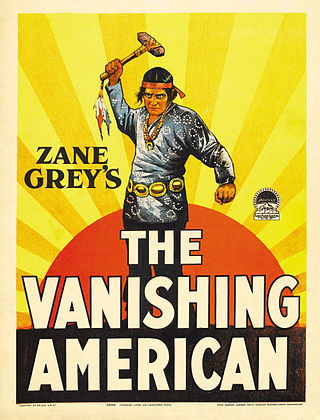
The Vanishing American is a 1925 American silent Western film produced by Famous Players–Lasky and distributed through Paramount Pictures. The film was directed by George B. Seitz and starred Richard Dix and Lois Wilson, recently paired in several screen dramas by Paramount. The film is based on the 1925 novel The Vanishing American by Zane Grey. It was remade as a 1955 film starring Scott Brady and Audrey Totter.

David O. Selznick (1902–1965) was an American motion picture producer whose work consists of three short subjects, 67 feature films, and one television production made between 1923 and 1957. He was the producer of the 1939 epic Gone with the Wind. Selznick was born in Pittsburgh and educated in public schools in Brooklyn and Manhattan. He began working in the film industry in New York while in his teens as an assistant to his father, jeweler-turned-film producer Lewis J. Selznick. In 1923, he began producing films himself, starting with two documentary shorts and then a minor feature, Roulette (1924). Moving to Hollywood in 1926, Selznick became employed at Metro-Goldwyn-Mayer (MGM), where he produced two films before switching to Paramount in early 1928. After helping to guide Paramount into the sound era, Selznick moved to RKO Radio in 1931 where he served as the studio's executive producer. During his time at RKO he oversaw the production of King Kong (1933) and helped to develop Katharine Hepburn and Myrna Loy into major film stars.
